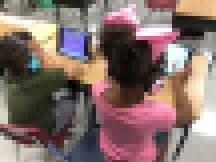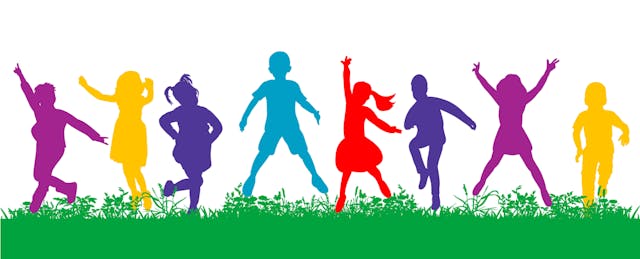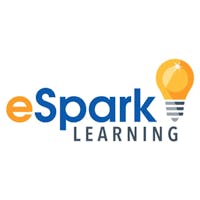Her voice cracking with emotion, first-grade teacher Candy Mobley recalls the day in 2014 when her school district's one-to-one program launched. "Their faces were so happy—it was like Christmas. I could have cried. Some of them had never seen an iPad or a laptop and probably wouldn't have without the program here."
Just five years earlier, this scenario would have been unthinkable for Piedmont City Schools, a rural district in Alabama. But when district leaders launched mPower Piedmont—broadly integrating technology to empower their teachers—they were committed to seeing improved outcomes for each of the district’s 1,200 students. Now that effort is paying off in a big way.
In a candid chat, Mobley shares how embracing technology to personalize instruction and teaching with compassion helps students achieve success and find happiness, in the classroom and beyond.
EdSurge: What role does happiness play in student learning, especially in a struggling community like Piedmont?
Candy Mobley: It plays a tremendous role. How can we have mindfulness and concentrate on what we're doing if we don't feel good? We were always taught, when I went through teachers' college, that you take care of students’ physical needs. But we also need to be happy. We need to feel confident we can learn, and we need to feel safe in how we learn, whatever level that is. If we're worried about what somebody thinks of us, or if we don't feel strong about ourselves, we're not going to learn as much as we could.
Our community struggles, and our students come to us with a lot of issues and not many life experiences. But that's no reason for our children not to do well. That's a challenge, not an excuse.

What are some ways you support students’ happiness and learning in your classroom?
I use every tool and strategy I can think of to help students—devices, learning apps, getting to know students, finding fun and engaging projects—and so do all the educators in our district. There needs to be a mix of approaches to teaching and learning; what might work for student A is not going to work for student B.
We do a lot of talking and writing activities where I'm watching, seeing what they like, what they don't like. We read “Chrysanthemum” and talk about our names—how we think we got our name, what meaning it has to us. Students create posters about themselves, the dynamics of their family, what they want to be when they grow up, favorite pastimes, favorite foods. I learn a lot about each student.
We have physical movement twice a day. We do group projects and hands-on learning. I'm getting Blue-Bot robots this year, so we can do coding in first grade! And when we look at sound and light waves, we'll make a banjo on our desk where we use rubber bands and listen to the noises that come from the vibrations. Kids love those types of hands-on projects.
Do you use differentiation as a teaching strategy?
Absolutely! One of the most impactful things we've done is to differentiate math and ELA learning to make it more personal for our kids.
We started using eSpark in 2014 to differentiate reading and math, and it's been amazing.
Students are truly engaged, the videos are child friendly, students like the variety and choice in the apps they play. It's always changing, and students move on to new skills once they’ve mastered something.
What I really like is that students aren’t all doing the same thing, so there’s no sense of competition. Sometimes when we use digital curriculum, students will say things like, "I'm ahead of you. I'm on level 15." There's none of that because everyone is on their own learning path.
With 18 students in my classroom, I really have 18 different levels. Everyone is an individual, and not everybody fits in the same level. eSpark helps individualize learning for every student.
EdSurge readers can try eSpark for one year at no charge! Claim your free account here.
How has differentiating with technology impacted learning?
Since we started differentiating with eSpark, our 2015-2016 annual NWEA state assessment gains were terrific. In math, students went from scoring in the 49th percentile to scoring in the 60th percentile. In reading, they went from the 48th percentile to the 57th. Even though we're a small school with a lot of challenges, we're the top-rated district in our county, which is unbelievable because there are large schools in our county.
And because these kids are successful, they're also happy.
The differentiation tool—and the data it provided—was a big part of that success. Of course, I have to do my job. I need to connect with my students and make learning fun and exciting for them, but this tool really helps me as a teacher.

Why do you think differentiating has helped so much?
My high-flyers can go ahead, learn new things and challenge themselves. For my strugglers, maybe they missed something in kindergarten, but I can go back and fill those gaps so they can move on, get to first-grade levels.
And it also helped me as a teacher. When we first started our one-to-one initiative, I was on board, but I was frustrated. I didn't know how to use technology to educate children effectively. I didn't know how to tell if I was doing it right, or if students were where they needed to be in their learning. We didn't have that data. But now I can see how students are doing and if they've improved. Now I can reach every student.



